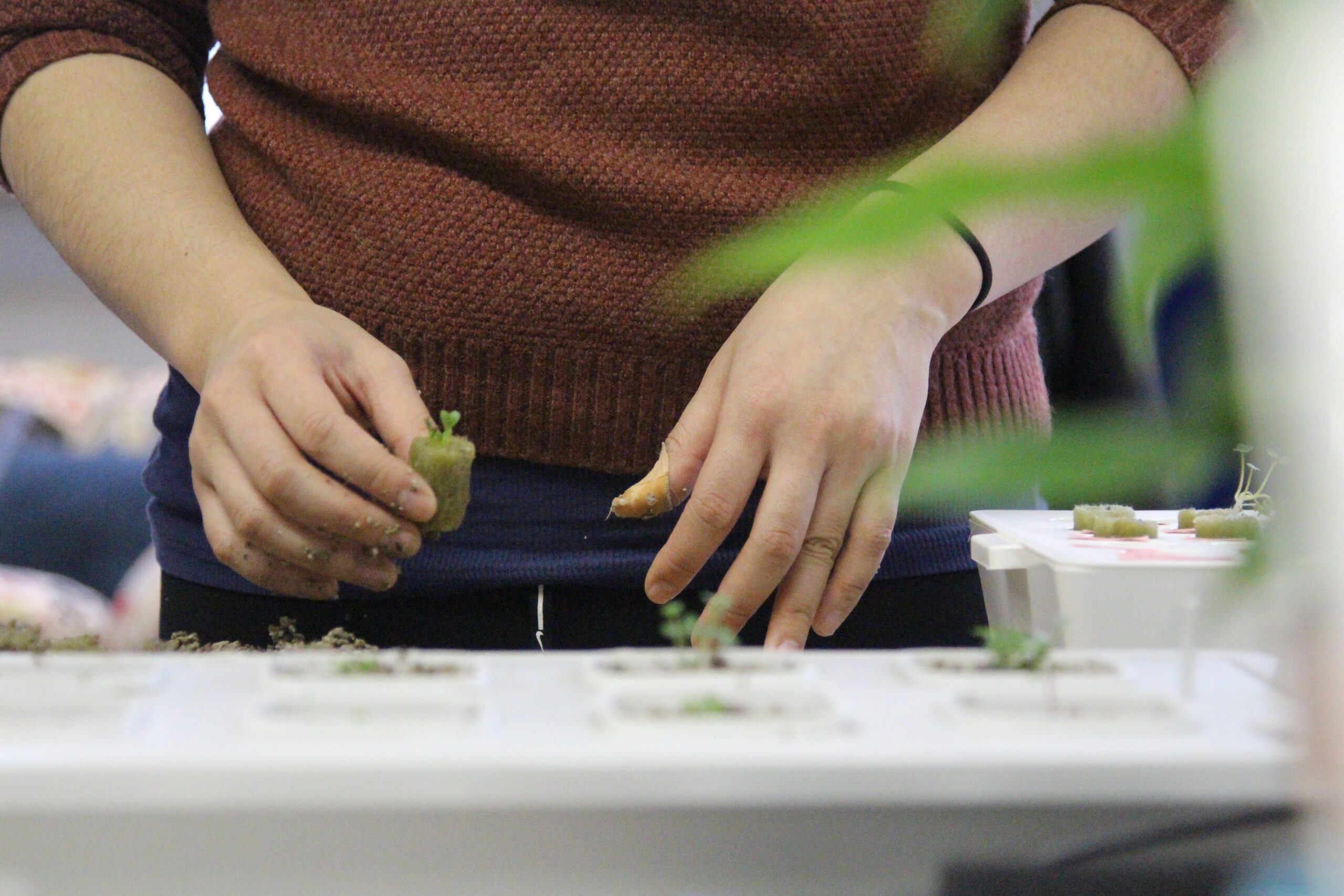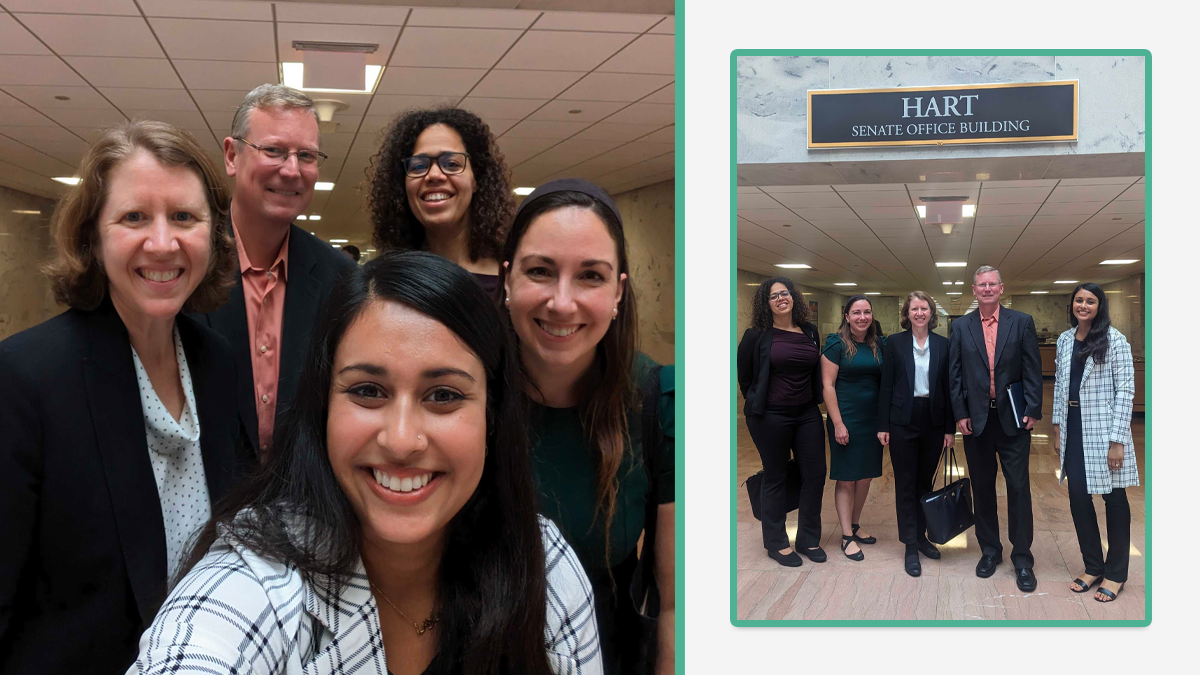
Wins, Gaps, & Looking Forward in the U.S. Bioeconomy
September should be considered National Bioeconomy Month. This past September marked the one year anniversary of the 2022 Presidential Executive order on Advancing Biotechnology and Biomanufacturing Innovation for a Sustainable, Safe, and Secure American Bioeconomy (affectionately known as the Bioeconomy EO). SynBioBeta celebrated the occasion by organizing a Bioeconomy Product Showcase on Capitol Hill that highlighted many different companies within the bioeconomy and proudly boasted bipartisan support in attendance. FAS wrapped up the month by hosting a Bioeconomy & Biomanufacturing Hill Day and Dinner on September 28th, 2023. We brought in some of our subject matter experts to talk in-depth about their Day One Memos and other contributions with key members of Congress.
Highlights Hill Day & Dinner
- Workforce development for the bioeconomy was a hot topic. Our subject matter experts pointed to the need for workers that have interdisciplinary skill sets that include both bio and engineering or bio and computer science. Support for interdisciplinary fellowships (like the Department of Energy Computational Science Graduate Fellowship) could help fill this need. Robust training is needed at all levels of biomanufacturing processes, and could include internships, apprenticeships, and associates and bachelors degree programs.
- To create supply chain resiliency and be competitive with other nations in the global bioeconomy, it is imperative to reduce costs of producing inputs needed for biomanufacturing (e.g., amino acids for biopharma), and to produce these inputs within the U.S. Our current reliance on other countries, like China, for these materials makes our bioeconomy fragile and susceptible to disruptions.
- A successful U.S. bioeconomy needs a strategic framework that unites the different agencies working on different aspects of the bioeconomy, including investments (e.g., EDA Tech Hubs, DoD Biomanufacturing Strategy, and NSF BioFoundries) and regulatory oversight. Both the Bioeconomy EO and the CHIPS and Science Act of 2022 called for the creation of a coordinating office housed in the Office of Science and Technology Policy (OSTP), but there has been no movement to create this coordinating office.
- The bioeconomy also needs appropriate financing. Many startups face the challenge that funding from venture capital firms requires a fast turnaround time for a return on investment (typically 3-5 years). Due to the nature of the products that are produced, many biotech companies are unable to demonstrate their value so quickly. In addition, scaling from a laboratory benchtop to industrial-scale biomanufacturing is expensive and is seen as too risky for typical bank loans. For the bioeconomy to be economically viable, it will need financial measures (potentially, tax incentives, credits, or other financial programs) to support biomanufacturing so that companies can have a chance to show they are viable and valuable.
- To capture the economic value of the bioeconomy and the impact of investments in this sector, appropriate metrics and measurements are needed. In March of 2023, the Bureau of Economic Analysis (BEA) published a feasibility report that indicated that it would be difficult to measure all aspects of the bioeconomy due to a lack of consensus definition, but a satellite account could be created to track aspects of the bioeconomy. However, in order for the BEA to create this type of account, Congress would need to appropriate the funds and direct the BEA to do so.
- Executive branch agencies are working towards a prosperous and resilient bioeconomy that is competitive at the global level, but these agencies can only do so much without Congressional champions on the Hill to keep fighting and funding the programs needed to achieve this.

Dr. Nazish Jeffery, Dr. Sarah Carter, Dr. Allison Berke, Dr. Chris Stowers, and Dr. Sarah Richardson representing the Federation of American Scientists at the Bioeconomy & Biomanufacturing Hill Day and Dinner
Next Year is Critical for the Bioeconomy
In a short timespan, several federal agencies have pushed the needle forward in terms of the U.S. bioeconomy, however there is no shortage of work left in order to achieve a “Sustainable, Safe, and Secure” bioeconomy. For the next year, we would like to see an updated definition of the U.S. bioeconomy that accounts and specifies sectors that are and are not part of the bioeconomy and takes sustainability as its main priority. In addition, the National Institute of Standards and Technology (NIST) should update the Bioeconomy Lexicon and prioritize setting standards for biomanufacturing that utilizes a sector to sector approach instead of an overarching standards approach to ensure that innovation is not stifled by standards that do not allow for the flexibility needed in the biotech space.
Additionally, it will be vital for the federal government to enact a true framework for the U.S. bioeconomy by creating a coordinating office housed in OSTP that works with the various federal agencies focused on the bioeconomy and provide support to publish the reports directed by the Bioeconomy EO on time. Furthermore, in order to achieve products, goods, and services that are sustainable, secure, and safe, it will be essential for the coordinating office to gather public opinions in order to help shape and influence our bioeconomy.
Increased congressional involvement is also necessary to address key challenges the bioeconomy currently faces, such as the inability to measure the bioeconomy and the challenge that companies within the bioeconomy face (such as incomplete knowledge on processes relating to creating a startup, scaling goods and serves, and navigating the regulatory system). The BEA should be directed by Congress to create a satellite account to measure the U.S. bioeconomy and Congress should mandate a public-private driven landscape analysis on the current financial situation of the U.S. bioeconomy in order to be able to identify the gaps in financing the sector currently faces.
There is no doubt that the bioeconomy has potential to grow, but it needs a solid framework to stand upon. Implementing some or all of these ideas will not only lead to a prosperous bioeconomy, but it will also create one that is resilient, sustainable, and secure.
To achieve a durable and strategic interagency approach to the bioeconomy, OSTP should establish a Bioeconomy Initiative Coordination Office to coordinate strategic U.S. government investments in the bioeconomy.
Truly open science requires that the public is not only able to access the products of research, but the knowledge embedded within.